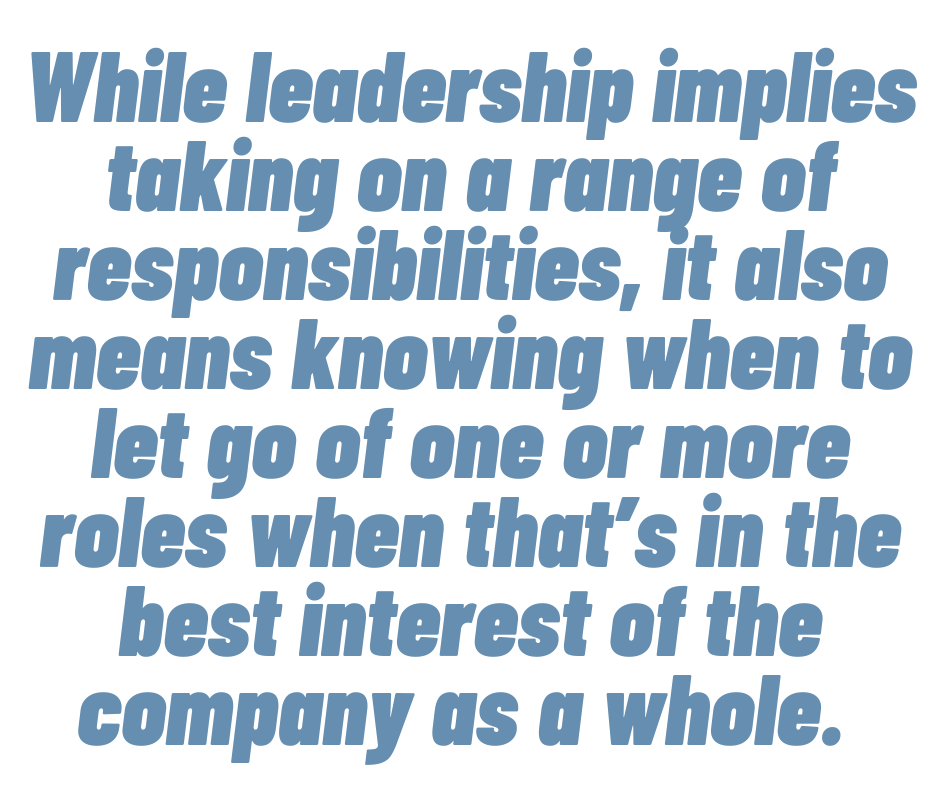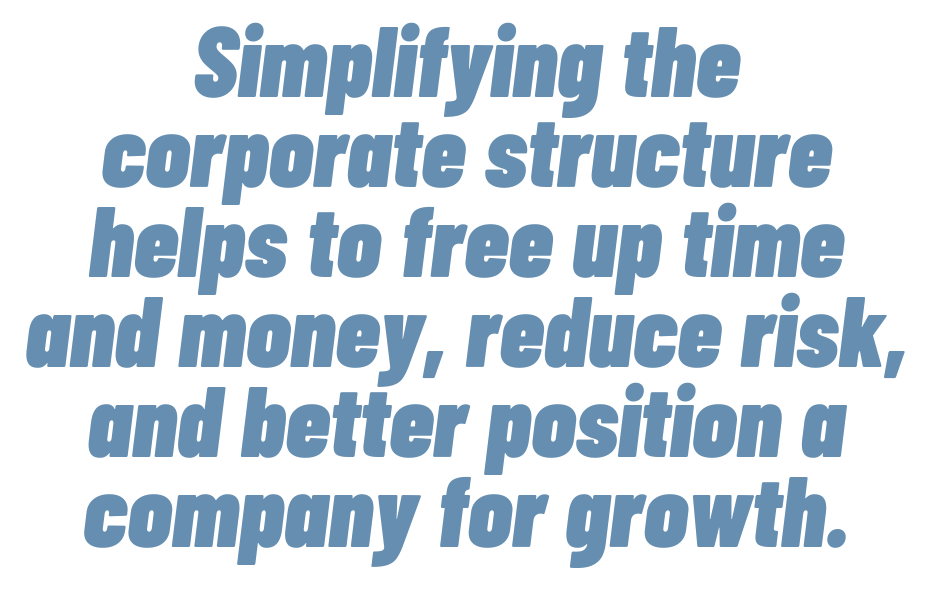- Reduce the Number of Products and Services you Offer.
Fewer products can be easier to manage and market, which can lead to cost savings and a more focused product strategy. A streamlined product line also engenders higher customer satisfaction as it removes confusion and simplifies the buying process.
The greatest brands make life simple for their customers. They deliver what people want without an overwhelming number of options, versions, or price points. By simplifying the customer experience in a complex world, these brands win customer loyalty, which drives business results and creates value for shareholders. 
Two standout examples of simple product offerings are Chipotle and Tesla. Chipotle offers only three core menu items: tacos, burritos, and bowls. This small menu reduces the number of ingredients needed on-hand, thus reducing the likelihood of waste. Furthermore, it means quick service. A small menu also means customers know exactly what’s for sale each time they visit the restaurant. It’s a win-win situation that’s made Chipotle one of the most successful quick service restaurants in America.
Tesla is also known for offering a smaller, carefully targeted product line consisting of just 6 vehicle models. With its lesser-priced Model 3 to the luxury Model S group, joined by the Cybertruck, Tesla addresses the needs of its market with but a few carefully designed choices. Compare this with the dizzying array of models of Mercedes Benz and BMWs on the market to see why Tesla is a simpler choice for customers looking to buy a car albeit an electric one.
- Make Tough Decisions and Let Go of Projects and Businesses that don’t Make Sense.
When a product line or an initiative no longer makes sense, it’s time to cut it loose and move on. Remember that complacency, especially when overall business results are good, can lead to stifling inaction, and this inaction can hurt a company in the long run as it endeavors to sustain the unsustainable. The most significant challenge when faced with ending projects or products is having the vision and confidence to make that decision and take action.
For example, in 2016, Goldman Sachs, a leading investment bank, launched Marcus, a consumer banking platform. As one of the most trusted firms on Wall Street, the company felt its deep expertise in commercial finance would give it the edge for a consumer-facing product. However, by August 2022, after initial rapid growth and extensive investment, Goldman Sach had yet to break even on Marcus. Worse, the company had accumulated a $1.2 billion loss. Marcus proved to be a bet that didn’t pay off, and Goldman sold off most of Marcus’s components to gradually exit the business.
In another example, it was widely known that Apple was hard at work developing an autonomous electric vehicle, the fabled “Project Titan.” But after years of development and an R&D expenditure of over $1 billion, Project Titan still faced daunting technical and logistical problems, further amplified when key personnel decided to walk. In February 2024, Apple executives finally canceled Project Titan, in the process writing off the enormous amount of money spent and laying off 2,000 employees. Painful? Certainly, but all the more necessary given the circumstances. 
Two other famous examples of companies canceling highly anticipated and much hyped products that turned into losers are Coca Cola’s New Coke in 1985 and Microsoft’s largely forgotten foray into mobile phones.
The lesson learned: don’t let failures, disappointments, or wrong turns linger on within your organization. Simplify your business by jettisoning them and moving on.
- Break Up.
Sometimes smaller is better, especially in an enterprise business with competing and diverse divisions or product lines. For such companies, split-ups can greatly benefit shareholders, because separately managing each segment often maximizes the profits of each entity. The idea is that the separate pieces of these companies will be worth more than the company as a whole.
By breaking up, leaders can take more risks, move more quickly, and accelerate growth in ways that conglomerates simply can’t do. Smaller companies may also be more agile and efficient than larger companies, allowing for faster decision-making and more targeted strategies. And there’s often a certain entrepreneurial spark that’s re-ignited when a company spins out from a larger parent and is able to move faster to achieve quicker success.
General Electric, once the epitome of a sprawling corporate conglomerate, has split into three stand-alone health care, energy, and aerospace corporations. The aerospace unit, GE Aerospace, maintains the GE ticker and has raised its dividend by 250%, testifying to the value of breaking free from the other groups to stand on its own.
Johnson & Johnson also split into two entities: one company for pharmaceuticals and one for consumer products. The split allowed J&J’s executives to focus more on developing innovations and expanding the businesses of medical technologies and pharmaceuticals, the two areas that directly impact the consumer product company. Other Big Pharma companies, including Pfizer, Merck, and GlaxoSmithKline, have either already spun off large divisions in the past few years or have plans to do so.
- Let Go of One of your Roles

While leadership implies taking on a range of responsibilities, it also means knowing when to let go of one or more roles when that’s in the best interest of the company as a whole.
Jack Dorsey, founder and former CEO of Twitter (now known as X) is an example of this trend. Wall Street investors had criticized Dorsey for his simultaneous running of Square, another important tech company he founded, while also pursuing diversified pet projects involving blockchain, cryptocurrency, meditation, and traveling around the world. When the pressure of all these pursuits, not to mention backlash from investors, became too much, Dorsey relinquished his role at Twitter to focus on running Square, (now called Block) along with his other interests and passions.
- Say No to Most of the Opportunities that Come your Way
Turning down the next business opportunity that comes your way just might be the best decision you ever make. Many busy executives don’t say “no” often enough and miss the positives that arise from eschewing most opportunities. Turning down such invitations and the additional work attached to them allows you to remain focused on your top priorities and the commitments you have already made. High achievers succeed because they prioritize their commitments and stay focused.
In a podcast titled “How to Say No, well-known entrepreneur, fitness advocate, and business commentator Tim Ferriss stated that successful people say no to 90% of the things that are asked of them. They just don’t have the time to take advantage of every opportunity. But because they say no so frequently, they learn to do it in a way that’s effective but respectful, leaving a positive impression.
One of the most famous “nay-sayers” is Warren Buffett, who ranks among the most successful businessmen and investors of all time. One of the keys to his success is his ability to prioritize and use his time wisely. Time is limited, so if you want to make the most of it, you have to be able to say “no” to people and opportunities that are coming your way one after another.
- Simplify the Operating Structure of the Company
Simplifying the corporate structure helps to free up time and money, reduce risk, and better position a company for growth. Many enterprises added layer upon layer of management and org chart entries as they grew and expanded their product lines. Eventually these bloated structures became counterproductive, and smart executives began looking for ways to cut through the bureaucracy and get back to a more simple and straightforward way of being.
One such way to simplify organizational structure for growth is to adopt a flat or networked structure. A flat structure has fewer levels of management and more autonomy for employees. A networked structure consists of flexible and collaborative teams that work across functions and boundaries. The objective in both cases is to remove unnecessary layers of management that complicate or restrain business operations or lead to inefficiency and redundancy.
But before scaling back organizational structure, it’s essential to have a clear vision of the company’s core purpose and values. Why does this business exist? What are the principles that guide its actions and decisions? How does it create value for customers and stakeholders? Having a shared purpose and values helps to align teams, motivate employees, and communicate brand identity clearly to the marketplace.
 In January 2024, The Bayer Group, a worldwide healthcare and pharmaceutical conglomerate, adopted a new worldwide operating model called “Dynamic Shared Ownership,” designed to reduce hierarchies, eliminate bureaucracy, streamline structures and accelerate decision-making processes. The aim of the new operating model was to make the company much more agile and significantly improve its operational performance.
In January 2024, The Bayer Group, a worldwide healthcare and pharmaceutical conglomerate, adopted a new worldwide operating model called “Dynamic Shared Ownership,” designed to reduce hierarchies, eliminate bureaucracy, streamline structures and accelerate decision-making processes. The aim of the new operating model was to make the company much more agile and significantly improve its operational performance.
Bayer’s newly appointed CEO Bill Anderson noted that the 12 layers of management between himself and customers were “simply too much” and added that, by the end of 2024, the company will remove multiple layers of management and coordination. While it’s too soon to see how Bayer does, one thing appears clear: simple equals speed.
••••
In summary, the opportunities to simplify your business life are out there, if you take the initiative and act. If you’re feeling stuck and want to break through to a simpler professional life, perhaps an executive coaching engagement can help. We’ll ask focused questions to stimulate creativity and new ideas that you had not previously considered. Coaching is also about action, which we will encourage you to take once you choose the right path forward for you. Contact us to explore the power of coaching.
Found this article helpful? Read our other article on “Uncomplicate Your Business Life.”
Here are more resources related to this topic
Articles:
- Uncomplicate your Business Life
- Cultivating Awareness of Others as a Business Leader
- How Business Leaders Can Inspire Performance in their Employees
- Business Growth Tips from the Inc. 5000
- Businesses large and small embrace the new digital revolution
Guide:
Videos:
- How to Use Content To Build Your Coaching Business
- Improve Communication Using the “Three Levels of Conversation” in Your Business
- Simplify Your Business and Grow!
- Delegate BETTER in Your Business!
- 6 Easy Ways to Simplify Your Business or Professional Life
Photo copyright: Featured photo is from ©LinkedIn Sales Navigator via Pexels. Secondary photo is from ©Kindel Media via Pexels.




















